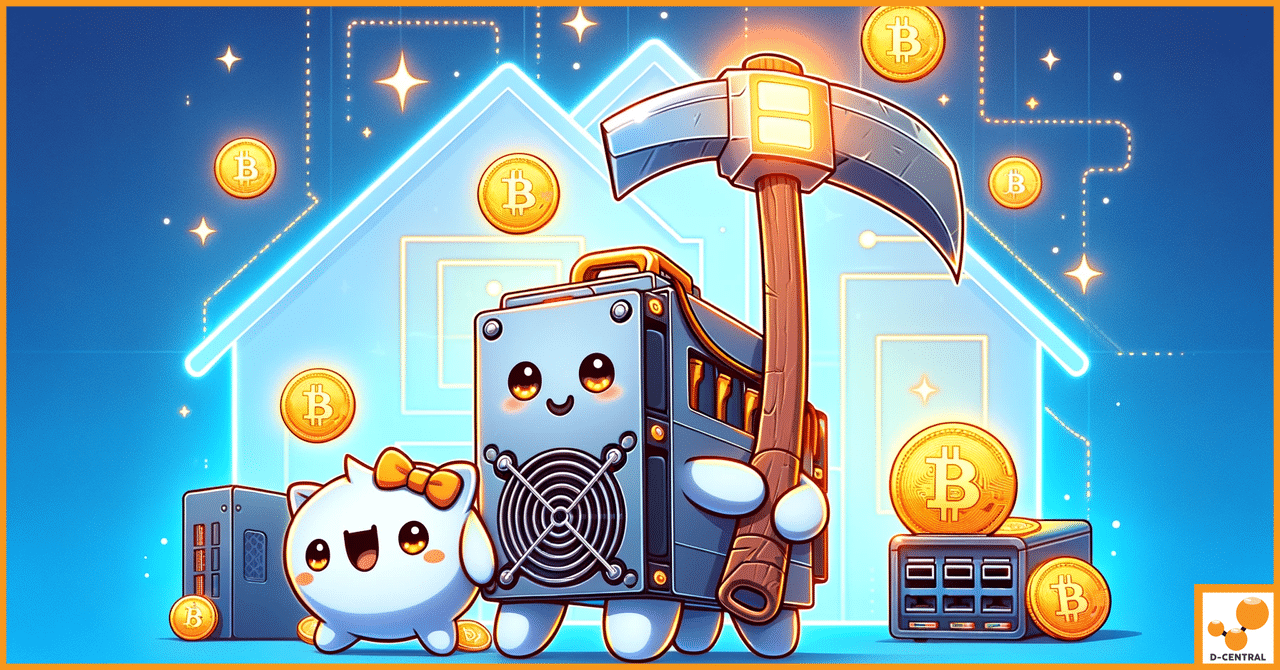
The Debate Over BRC-20 and Ordinals in Bitcoin’s Ecosystem
Since its inception, Bitcoin has stood at the forefront of the digital currency revolution, embodying a vision of decentralized, peer-to-peer
4479 Desserte Nord Autoroute 440, Laval, QC H7P 6E2

Discover the intricate process of Bitcoin mining, the crucial role of block solving, and the latest technological advancements reshaping the industry. Learn how miners secure the network and how you can optimize your mining operations.
Bitcoin mining is the backbone of the Bitcoin network, serving three critical functions:
Bitcoin mining is the process by which new bitcoins are created and transactions are added to the blockchain. Miners use powerful computational hardware to solve complex mathematical problems, which in turn secures the network and processes transactions. This process is essential to the functioning of the Bitcoin network as it ensures the integrity and chronological order of the blockchain, prevents double-spending, and introduces new bitcoins into circulation.
Block solving is a critical component of Bitcoin mining. It involves miners competing to find a valid hash for a new block of transactions. This process, known as proof-of-work, requires significant computational effort and ensures that the blockchain remains secure and tamper-proof. Solving a block not only rewards the miner with newly minted bitcoins but also helps maintain the decentralized nature of the Bitcoin network by making it difficult for any single entity to control the blockchain.
Miners begin by collecting transactions from the Bitcoin network. Each transaction contains information about the transfer of bitcoins from one address to another. Miners verify these transactions by checking digital signatures and ensuring that the sender has sufficient funds to complete the transfer. Verified transactions are then added to a pool of unconfirmed transactions known as the mempool.
Once a set of transactions is selected, miners organize them into a data structure called a Merkle tree. In a Merkle tree, each leaf node represents a transaction hash. Pairs of transaction hashes are recursively hashed together until only one hash remains, known as the Merkle root. The Merkle root is a single hash that represents all the transactions in the block, providing an efficient and secure way to verify the integrity of the transactions.
The block header consists of the following components:
Proof-of-work is the mechanism that secures the Bitcoin network and validates new blocks. Miners compete to find a nonce value that, when combined with the other elements of the block header, produces a hash below the network’s difficulty target. This requires repeatedly hashing the block header with different nonce values until a valid hash is found. The SHA-256 hashing algorithm is used, and the process is computationally intensive, requiring significant processing power.
Miners start with a nonce value and increment it, recalculating the hash of the block header each time. If the resulting hash is not below the difficulty target, the nonce is adjusted, and the process is repeated. This trial-and-error approach continues until a valid hash is discovered. The miner who finds the valid hash first broadcasts the block to the network, where other nodes verify its validity and add it to the blockchain.
The Bitcoin network adjusts the mining difficulty approximately every two weeks (every 2016 blocks) to maintain a consistent block time of about 10 minutes. This adjustment ensures that regardless of changes in the total network hash rate, blocks are mined at a steady rate.
Every 2016 blocks, the network calculates the total time taken to mine these blocks and compares it to the expected time (2016 blocks x 10 minutes per block). If the actual time is shorter, the difficulty increases; if it is longer, the difficulty decreases. This automatic adjustment maintains the balance and ensures the stability of the Bitcoin network.
Miners play crucial roles in the Bitcoin network:
Application-Specific Integrated Circuits (ASICs) are specialized hardware designed specifically for Bitcoin mining. Unlike general-purpose CPUs and GPUs, ASICs are optimized for the specific computational tasks required to solve Bitcoin’s proof-of-work puzzles, making them far more efficient.
ASICs for Bitcoin mining are built to perform the SHA-256 hashing algorithm extremely efficiently. They contain many small, optimized circuits that can perform the hashing operations much faster than general-purpose hardware. This optimization allows ASIC miners to achieve higher hash rates while consuming less power, making them the preferred choice for serious Bitcoin mining operations.
Recent advancements in ASIC chip architecture have led to significant improvements in mining performance. Modern ASICs incorporate more transistors, allowing them to perform a higher number of hash calculations per second. These improvements have increased the overall hash rate of ASIC miners, making them more powerful and efficient. Innovations such as smaller nanometer process technology (e.g., 7nm and 5nm chips) have also contributed to enhanced performance by reducing power consumption and heat generation.
Effective cooling is critical for maintaining the performance and longevity of mining hardware. Recent innovations have introduced advanced cooling solutions, including liquid cooling and immersion cooling. These systems are more efficient at dissipating heat compared to traditional air cooling methods, allowing ASIC miners to operate at higher performance levels without overheating. Enhanced cooling systems help maintain optimal operating temperatures, reduce wear and tear on components, and extend the lifespan of mining equipment.
Custom firmware such as BraiinsOS has been developed to optimize the performance of ASIC miners. This firmware allows miners to fine-tune various settings, including clock speeds, voltage, and power consumption, to achieve the best balance between performance and efficiency. BraiinsOS provides a user-friendly interface for configuring and monitoring mining hardware, making it easier for miners to maximize their returns.
The adoption of renewable energy sources such as solar and wind power is becoming increasingly popular in the mining industry. These sustainable energy solutions help reduce the environmental impact of mining operations and lower electricity costs. Solar panels and wind turbines can provide a reliable and cost-effective power supply for mining farms, especially in regions with abundant sunlight or strong winds.
Minimizing power consumption is crucial for improving mining efficiency and profitability. Some effective techniques include:
High-efficiency power supplies convert more of the electrical power they draw from the grid into usable power for mining hardware, reducing energy waste. Power supplies with 80 PLUS Gold, Platinum, or Titanium certifications are designed to provide high efficiency, resulting in lower electricity bills and less heat generation, which further reduces cooling requirements.
Maintaining optimal operating temperatures is essential for the longevity and performance of mining hardware. Overheating can lead to hardware failures, reduced efficiency, and increased maintenance costs.
Innovative cooling technologies and their benefits include:
Software plays a critical role in optimizing mining performance. Custom firmware and mining software can provide better control over hardware settings, improve efficiency, and enhance overall mining operations.
Examples of performance improvements through software updates include:
Ready to take your Bitcoin mining to the next level? Explore Bitaxe, the high-performance ASIC miner with customizable options.
Bitcoin mining is the process through which new bitcoins are created, transactions are added to the blockchain, and the Bitcoin network is secured. It involves solving complex mathematical problems using computational hardware.
Proof-of-work is a protocol within Bitcoin mining that involves finding a valid hash for a new block of transactions. Miners compete to solve cryptographic puzzles, securing the blockchain and preventing tampering.
Miners collect transactions from the Bitcoin network, verify them for authenticity and sufficiency of funds, and pool them into a mempool. These transactions are then organized into a Merkle tree to efficiently verify transaction integrity.
An ASIC (Application-Specific Integrated Circuit) chip is specialized hardware designed specifically for Bitcoin mining. It offers high efficiency and hashing power, making it crucial for competitive mining operations.
Recent advancements include enhanced ASIC chip architecture for better performance, more efficient cooling systems, custom firmware for optimization like BraiinsOS, and the adoption of renewable energy sources for sustainable mining.
Miners can improve efficiency by underclocking and undervolting hardware, utilizing power optimization algorithms, investing in energy-efficient mining hardware, and optimizing cooling methods and software settings.
Bitaxe is a high-performance ASIC miner that offers customizable options for miners. Equipped with advanced ASIC chips, it enables high hash rates and superior energy efficiency, contributing significantly to the efficiency and performance of Bitcoin mining operations.
DISCLAIMER: D-Central Technologies and its associated content, including this blog, do not serve as financial advisors or official investment advisors. The insights and opinions shared here or by any guests featured in our content are provided purely for informational and educational purposes. Such communications should not be interpreted as financial, investment, legal, tax, or any form of specific advice. We are committed to advancing the knowledge and understanding of Bitcoin and its potential impact on society. However, we urge our community to proceed with caution and informed judgment in all related endeavors.
Related Posts

Since its inception, Bitcoin has stood at the forefront of the digital currency revolution, embodying a vision of decentralized, peer-to-peer

Cryptocurrencies have taken the world by storm, offering a decentralized platform for financial transactions, free from government interference or central

The digital gold rush of Bitcoin mining has drastically evolved since Bitcoin’s inception. In the early days, individuals could mine